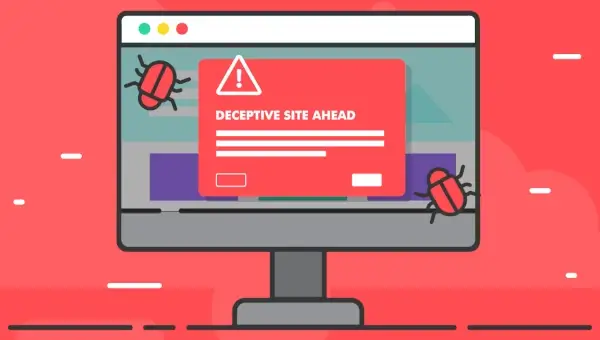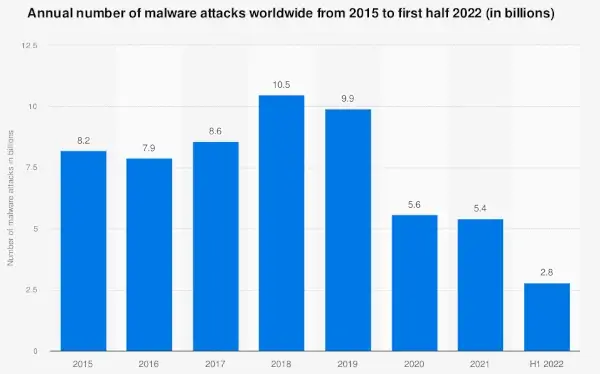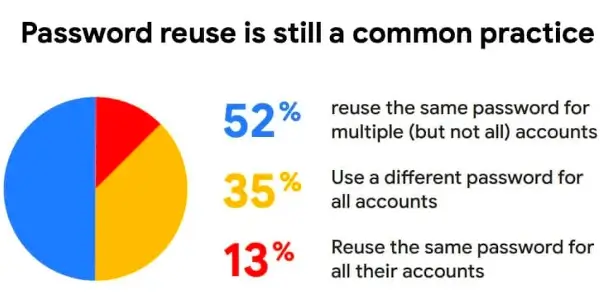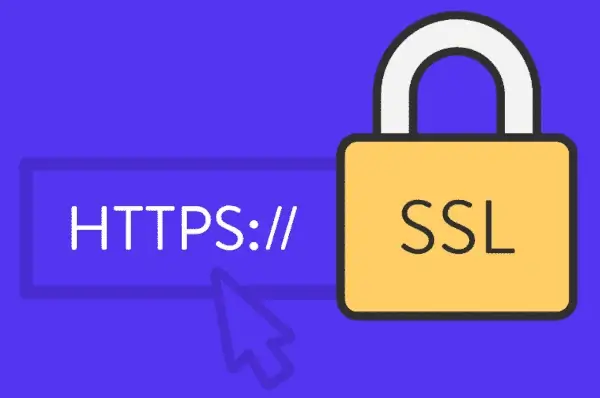
Seeing your website flagged as deceptive by Google or other search engines is enough to spoil anyone's day. You've spent long hours creating a site, only for users to be informed that it is a cybersecurity risk. But what can you do? Should you scrap the whole thing and start again?
Today we'll explore why your website has been flagged as deceptive. We'll also look at what you can do to overcome the issue.
Why Is Your Website Flagged as Deceptive?
Websites are only given this label if there are strong signs that wrongdoing has occurred. Google believes that your website has been hacked and is unsafe for visitors.
In other words, your website has been used for phishing attacks. You'll probably be familiar with this term if you're running a business online. It's a tactic used in 36% of organization breaches. Usually, phishing involves getting a text from a cybercriminal posing as a legitimate company. The text will encourage a user to share their personal details.
Website phishing works similarly. But a hacker uses your website instead of sending a text to gain users' details.
What To Do If Google Flags Your Website as Deceptive?
But what should you do once your website has been flagged? The first step is not to panic! The following tips will help you to remove the problem and reduce the damage.
Step 1 - Scan Your Website For Malware

The simplest way of checking your website is by running a malware scan. You might find that your website doesn't have malware after all. If this is the case, you can appeal to Google to remove the deceptive notice.
To scan your website, you'll need the help of an external tool. There are multiple options available. Take some time to research and find a solution that works for you.
An important note: Visit flagged pages on your website from a different browser. Hackers have tools to prevent website owners from seeing hacked pages. While a page may look like it should, regular users are being exposed to phishing.
Step 2 - Assess the Situation

So, you've found that your website is infected with malware? It contains phishing pages and is at risk of tricking your website users. Take a deep breath, and don't panic. While malware is bad news, you can remove it with the right tools. Take some time to assess the situation.
What damage has been done? Do you have contingencies in place for this kind of scenario? Remember, certain pieces of cloud compliance legislation, such as GDPR, require you to notify users about data breaches.
So, avoid rushing, but also don't take too long. Remember that Google ranks websites in terms of quality and user experience. The longer you take, the more damage to your position on the search engine results page.
Step 3 - Remove Phishing from Your Site
Once you've identified a problem, you'll need to remove malware immediately. This also goes for any deceptive pages that are present on your site. The quicker you act, the less damage is done to your website users and brand image.
But what can you do? There are two choices available. The first is to remove content using an external plugin. This option is the most straightforward and hassle-free.
The second option is more involved. It is, however, also more thorough—removing malware manually.
But this option has a heavy caveat: Only attempt to remove malware manually if you have deep experience. Without the proper knowledge, you might damage and stop your website from functioning.
Step 4 - Close Security Gaps

You've cleared malware on your site, removed deceptive pages, and warned your users. Does that mean the job is done? Well, not exactly. A straightforward question remains: "How did the breach occur?" Without closing the gap, you risk running into the same problem again.
Below are some suggestions of ways to spot vulnerabilities in your website.
- Rule out common issues: A host of common issues could cause vulnerabilities. Mistakes in website testing might have missed some of these issues. For example, you might be using an outdated plugin or insecure passwords.
- Update your website: WordPress receives constant security updates. If you miss any of these, it can expose you to new hacking techniques.
- Use external tools: With the right vulnerability monitoring service, you can easily spot problems on your site.
Step 5 - Appealing the Deceptive Flag

Now that your site is malware free, it's time to look to the future. Security can be a big worry for both you and your users. Why not take some steps to secure your site further and minimize the risk of future issues? You might invest in any of the following solutions.
Opt For Strong Server-level security
There is only so much you can do to protect your website. If your property is hosted on an insecure server, it will always be at risk. That's why you must pick the right host for your site. Try to opt for a host that offers some of the following options:
- Two-factor authentication provides an extra layer of security to your site.
- Active support to answer any queries that you have
- The creation of regular backups to protect you against data loss.
- Security measures such as SSL certificates, a strong firewall, and malware scans
For an extra layer of security, why not use a high-quality server monitoring tool to spot issues within your network?
Use a Password Manager

One of the most common ways hackers gain access to your website is with a password. Studies have shown that Two in three Americans (65%) reuse passwords for different online accounts. Why is this the case? People prefer to opt for simple, easy-to-remember passwords. Having a complicated password for other accounts is often associated with a headache.
But you can easily remove this issue with a password manager. This tool saves your passwords to access them from multiple devices easily. You won't need to worry about forgetting passwords, and you can bolster security on your site.
Install an SSL Certificate

You've probably spent a while thinking about your URL. Finding the perfect website address is essential for remaining memorable. You might even have taken time to think about your domain (perhaps you've used an AI domain to show that your business is cutting-edge). But when thinking about your URL, don't forget the importance of an SSL.
If you haven't already, installing an SSL certificate is a must. With SSL websites, the URL begins with "HTTPS" instead of "HTTP."
This means that traffic is encrypted between the web browser and the server. It's critical to gaining the trust of your website users. Without an SSL, traffic is exposed to cyber criminals, including customers' payment details. An SSL is easy to acquire; you simply need to find the right hosting provider.
Remember: You might run into issues when migrating to an SSL. Some parts of your website might continue to run on HTTP. If this is the case, you'll need to redirect traffic as quickly as possible. Website users might still get a warning from Google, even if most of your site runs on HTTPS.
You can easily redirect traffic using the "Really Simple SSL" plugin. This should be a short-term solution. Plugins can pose security risks themselves, with hackers able to exploit any discovered weaknesses. A better long-term solution would be to contact your developer.
Pro tip: Don't forget to monitor your SSL certificate validity and expiration date.
E-Signature software
There are other things that you can do to protect your data security. Look at where you have had specific issues in the past and seek to rectify them. If you have experienced, or you are concerned about, forgery or fraud, you may wish to look into E-signature software. These programs are designed with built-in security features to counter potential hacking and reduce the risk of divulging sensitive information compared to sending confidential information and contracts by post.
Conclusion
If your website has been flagged as "deceptive," you'll be understandably worried. There's no denying that this can be a big problem. Hopefully, however, this article should have put your mind partly at rest. Fixing the issue can be relatively simple; just remember the six tips. Let's quickly recap:
- Scan your website for malware.
- Assess the situation and find the best way to respond.
- Remove phishing files and deceptive pages from your site.
- Close security gaps to avoid any repetition of the issue.
- Appeal the decision, and carefully explain the steps that you've taken.
- Future-proof your website by bolstering its defenses.
Remember, the quicker you act, the less damage that is done to your customers and your business.


 Copyright 2000-2025, WebSitePulse. All rights reserved.
Copyright 2000-2025, WebSitePulse. All rights reserved.